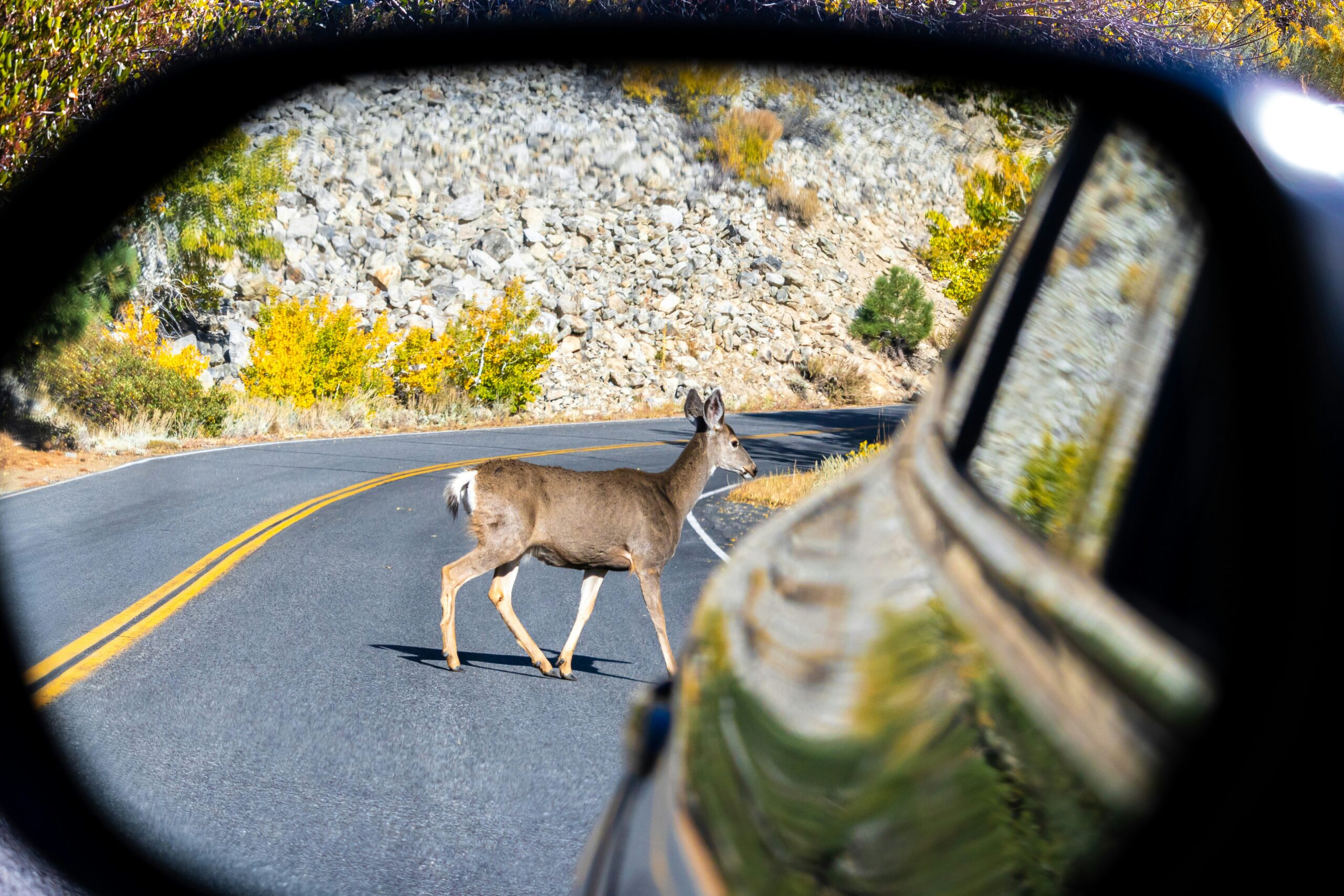
Press Release
State Legislators Call on U.S. Department of Transportation to Prioritize Wildlife Crossings in Upcoming Strategic Plan
September 8, 2025
Washington, D.C. (September 8, 2025) — Today, a bipartisan coalition of 120 state legislators from 34 states and territories submitted a joint letter to the U.S. Department of Transportation (DOT), urging the agency to maintain and strengthen federal programs that reduce wildlife-vehicle collisions and improve habitat connectivity along roadways in its Strategic Plan for fiscal years (FY) 2026-2030.
Spearheaded by State Senator Cleave Simpson (R-CO) and State Delegate Sheila Ruth (D-MD), the bipartisan letter was signed by lawmakers representing a broad spectrum of geographic regions. Together, they call for continued federal leadership in reducing wildlife-vehicle collisions that cost the U.S. more than 200 lives, 26,000 injuries, and $10 billion annually — while also killing millions of animals. A clear solution supported by recent federal programs is funding for well-designed and well-sited wildlife crossings over roadways, which can reduce collisions by up to 97% while providing local economic co-benefits.
“As a rural legislator who regularly travels these highways, I’ve seen firsthand the devastating consequences of vehicle-wildlife collisions,” said Colorado State Senator Cleave Simpson. “Supporting continued federal investment in wildlife crossings through the USDOT FY26–30 Strategic Plan is not just smart policy — it’s a lifeline for rural America, protecting our people, preserving our landscapes, supporting ecological resilience, and ensuring safer roads for everyone who calls these regions home.”
As the current Administration considers what programs will bring better innovation and safety to our transportation system, the letter outlines five key recommendations for DOT’s FY 2026–2030 Strategic Plan:
- Reauthorize and increase funding for the Wildlife Crossings Pilot Program (WCPP): Demand for the highly popular program – established under the 2021 Bipartisan Infrastructure Law – has far outpaced available funding, with states across the country ready to implement shovel-ready projects or complete prioritization studies.
- Maintain eligibility for wildlife-vehicle collision reduction measures across federal transportation programs: Continuing to allow wildlife crossings as eligible expenses across a variety of transportation grant programs gives states flexibility to address wildlife-vehicle collisions.
- Preserve bipartisan reporting, research, and training provisions: These tools ensure that state-level projects are effective, data-driven, and fiscally responsible.
- Make maintenance of wildlife infrastructure eligible for federal funding: Long-term upkeep of wildlife crossings is currently ineligible for federal funding. Making funding available for maintenance would extend the lifetime safety and fiscal benefits of these investments.
- Allow flexibility for wildlife infrastructure in emergency relief projects: Integrating crossings during disaster recovery can improve resilience, cost effectiveness, and long-term safety.
The letter highlights how states have already stepped up: red, blue, and purple legislatures have passed laws directing their transportation agencies to prioritize wildlife crossings. The creation of the federal WCPP program catalyzed further action, leading to an uptick in state-level wildlife crossing legislation as well as enabling states without prior regulations to voluntarily study and construct needed crossings.
“Wildlife crossings are a win-win for both humans and animals,” said Maryland State Delegate Sheila Ruth. “They protect drivers and wildlife from collisions and connect fragmented habitat to help ensure the survival of endangered species. Reducing the over 30 thousand deer-vehicle collisions each year in Maryland will lower the cost of insurance borne by Maryland drivers. But Maryland can’t do it alone. Support from the federal government for planning and building this infrastructure will result in safer roads, lower costs, and better protection for endangered wildlife.”
Legislators conclude by thanking DOT for their leadership on this matter and providing a clear call for the future: embed wildlife-vehicle collision solutions into the FY 2026–2030 Strategic Plan to protect lives, budgets, and the outdoor heritage valued by communities throughout the country.
The full letter can be viewed here: www.ncelenviro.org/app/uploads/2025/09/USDOT-FY26-2030-Strategic-Plan_-State-Legislator-Support-for-Federal-Wildlife-Crossing-Programs.pdf
###
Created by and for state legislators, the National Caucus of Environmental Legislators is a 501(c)(3) nonprofit that organizes over 1,300 environmentally-committed state legislators from all 50 states and both parties. NCEL provides venues and opportunities for lawmakers to share ideas and collaborate on environmental issues.